Clean rooms in the manufacture of plastic products by injection molding and extrusion
IBC Systems produces the whole range of works related to the design, supply of equipment and materials, as well as the installation of engineering equipment and clean room systems. When solving the task of providing the required technological parameters of the production process, IBC Systems specialists base on an integrated approach to the construction of a clean room. This takes into account both the specific features of a particular production room in which this cleanroom will be installed (volume-planning characteristics, technological purpose), and the requirements set directly for cleanliness, as well as the climatic parameters inside the cleanroom.
What is a clean room?
A clean room is a complex technical room in which the concentration of particles of contaminants is maintained within certain limits in accordance with the requirements of production standards for various products.
This is a room in which a countable concentration of aerosol particles is monitored, constructed and used so as to minimize the generation, generation and accumulation of particles inside the room and, if necessary, control other parameters such as temperature, humidity and pressure.

Clean room is designed to protect against contamination of the following types:
Inorganic
- Mineral particles
- Metal particles
Chemical
- Hydrocarbon Derivatives
- Organic compounds
Microbiological
- Bacteria
- Viruses
- Disputes
- Fungi
- Ticks
- Pollen

Today, in a modern market, clean rooms are widely used in various industries such as:
- Microelectronics
- Pharmaceuticals
- Optics
- Precision Engineering
- Laboratories and scientific researches
- Space and aviation industry
- Food industry
- Medicine
- Biotechnology
- Plastic production
- Communications

Classes of purity
The class of cleanliness of a clean room is clearly
regulated by the level of the content of various kinds of impurities and
particles in the air. Classes of purity differ in the number of bacteria
per unit volume. This parameter, one of the most important in the
classification of cleanrooms, is regulated by standards.
For Russia, the definition of the term "clean room" is given in the following
regulatory documents:
- GOST R ISO 14644-1-2002 "Clean rooms and associated controlled environments", part 1, Classification of air purity;
- GOST R 52249-2004 "Rules for the production and quality control of medicinal products";
- OST 42-510-98 "Rules for the organization of production and quality control of medicines (GMP)";
The above classes characterize the degree of purity of air in a "clean" room. Classification of clean rooms, given in the above-mentioned standards, has a number of distinctive features, in relation to those industries where these standards are used.
Class 1
Manufacture of integrated circuits.
Class 10
Production of integrated microcircuits with a conductor spacing of less than 2
μm.
Class 100
Aseptic production of injection preparations, requiring the absence of
microorganisms and particles. Surgery for implantation or organ
transplantation. Isolation of patients with immune deficiency, including
after bone marrow transplantation.
Class 1000
Manufacture of high-end optical elements. Assembly and testing of
precision gyroscopes. Assembly of miniature bearings.
Class 10000
Plastic production, assembly of precision hydraulic and pneumatic equipment,
valves with servo drives, high-precision watch mechanisms, high quality
transmissions.
Class 100000
Optical production, assembly of electronic components, assembly of hydraulic
and pneumatic devices.
Basic elements of a clean room
At the heart of architectural and building solutions for creating a clean room is the principle of building a "room in the room." The working area of a "clean" room is formed by a space limited by the use of encapsulated elements of the enclosing structure.
The main elements of a clean room are:
- Clean room working area, made of the following basic elements, such
as:
- Wall panels
- Ceiling panels
- Windows and Doors
- Flooring
- Lighting system
- Accessories - The system of cleaning and air conditioning, including the station for air preparation complete with filter elements, water cooler and other additional equipment.
- Control system maintained class of purity, as well as climatic parameters (humidity, temperature) inside the "clean" room.
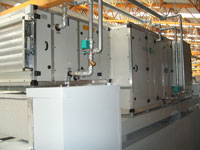
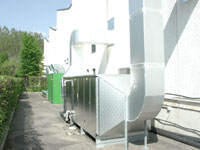
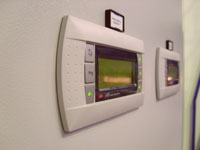

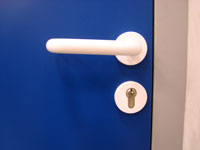
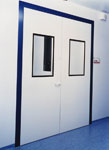
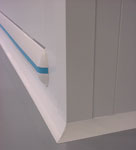
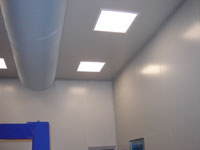

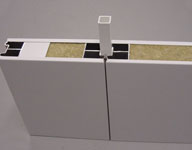
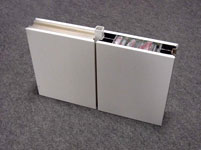
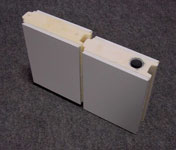
Clean rooms and modular clean rooms in plastic production
Clean rooms are an indicator of high technology production and quality assurance. Currently, they are increasingly used in the plastic industry.
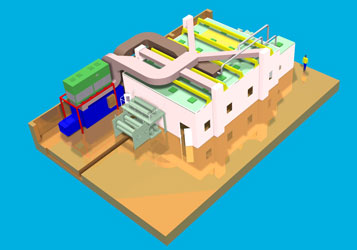
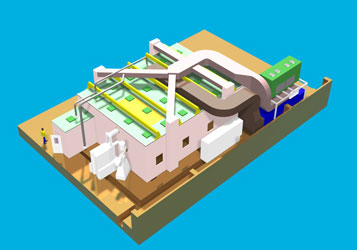
Modern production of plastic products for various purposes often makes high demands on engineering systems, air purity, equipment, etc.
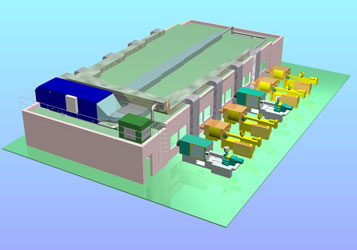
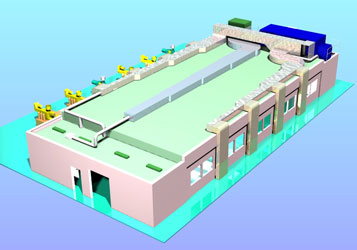
Usually, plastic production requires ISO class 8 (corresponding to 100,000 classes according to the US standard) and ISO class 7 (corresponding to 10,000 classes according to the US standard).

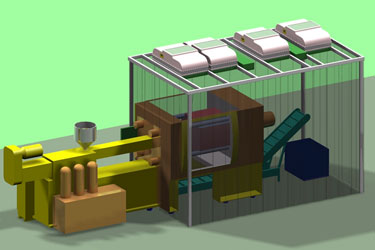
Apart from clean rooms of standard configuration, so-called modular clean
rooms are actively used in plastic production.
The main purpose of modular clean rooms or clean zones is the maintenance of
the specified parameters of the air environment in the local working space.
The main advantages of clean zones are their compactness, mobility, low cost and compliance with clean rooms in terms of air purity.

